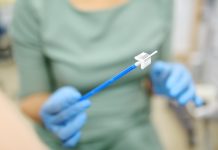Endometriosis, a chronic condition affecting millions worldwide, often eludes early detection despite its profound impact on women’s health – could a new diagnosis tool change lives?
Recent efforts by researchers from Florida Atlantic University’s Schmidt College of Medicine and collaborators highlight promising new approaches that could change how this debilitating disease is diagnosed.
Diagnosing endometriosis
Currently, diagnosing endometriosis involves a complex process of medical history review, physical exams, and sometimes invasive procedures like laparoscopy.
However, these methods have downfalls, they can be costly, carry surgical risks, and their accuracy may vary depending on disease stage and clinician experience.
The search for a non-invasive, accurate diagnostic test has been ongoing. While pelvic exams, ultrasound, and MRI are commonly used, they often excel in detecting advanced stages of the disease. “Non-invasive methods like MRI and transvaginal ultrasound are only effective for advanced stages of endometriosis,” explained Dr. Charles H. Hennekens, co-author of the commentary and a distinguished professor at FAU.
One of the innovative approaches discussed is Electroviscerography (EVG), which monitors myoelectric activity in the gastrointestinal tract. This method, though promising, is still in the experimental phase and requires further validation. If successful, EVG could offer a breakthrough by detecting unique patterns associated with endometriosis non-invasively.
EVG: Electroviscerography
“Once new technologies such as EVG are more fully evaluated, they may give clinicians the post-test certainty they need to transition from symptom-based to diagnosis-based treatment.” noted Dr. Kitsantas. As these technologies evolve and undergo rigorous testing, they could provide clinicians with the certainty needed to move from symptom-based to diagnosis-based treatments.
While there is currently no FDA-approved non-invasive test for endometriosis, ongoing research offers hope for the future. Collaborative efforts involving medical professionals, researchers, and advocates continue to push the boundaries of what is possible in diagnosing and managing this complex condition.
While the journey towards early diagnosis of endometriosis faces challenges, the commitment to innovation and research signals a promising path forward. As Dr. Kitsantas aptly put it, “Early diagnosis of endometriosis remains a challenge, with a succession of promising approaches ultimately not bearing fruit thus far.”











